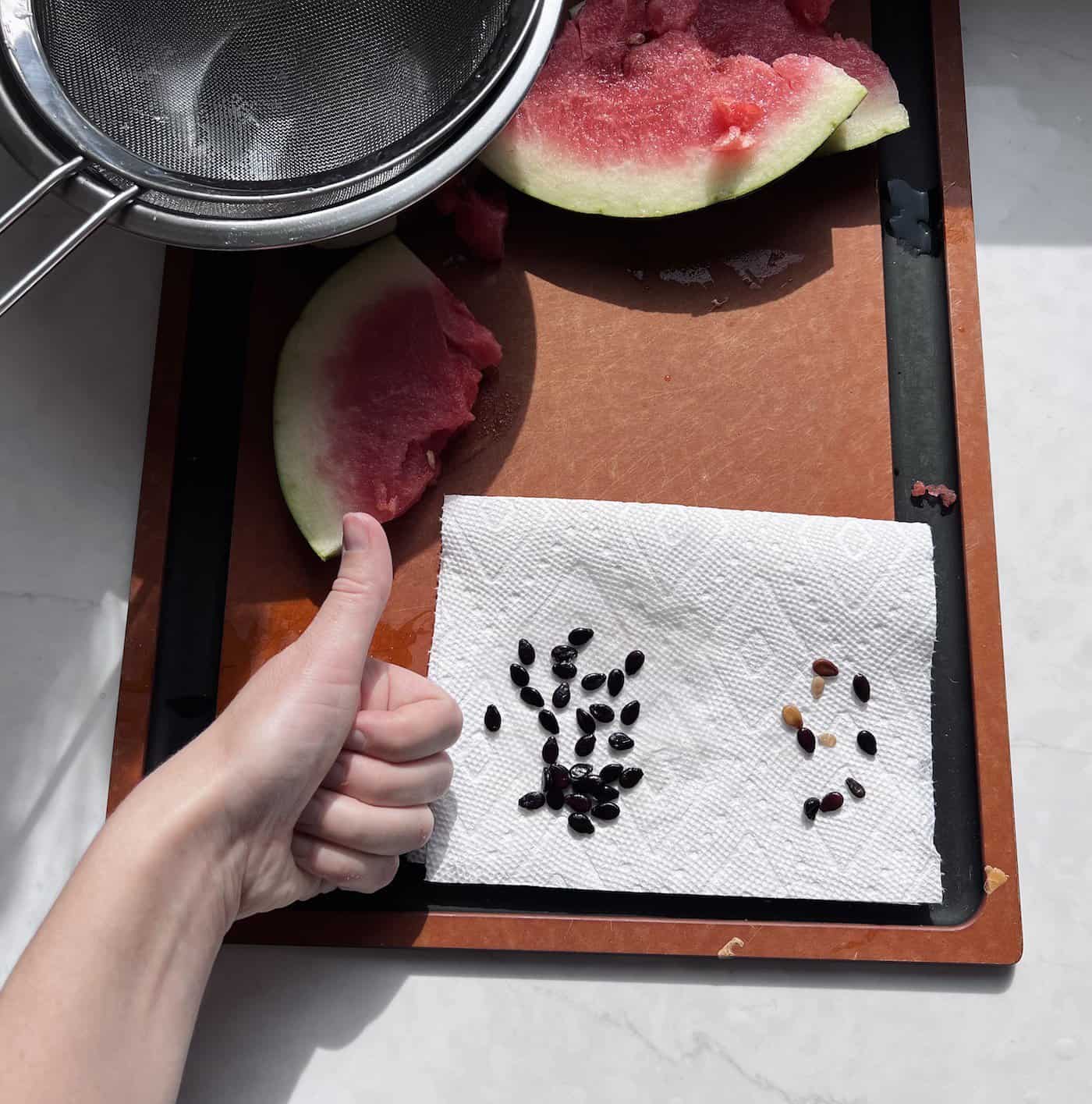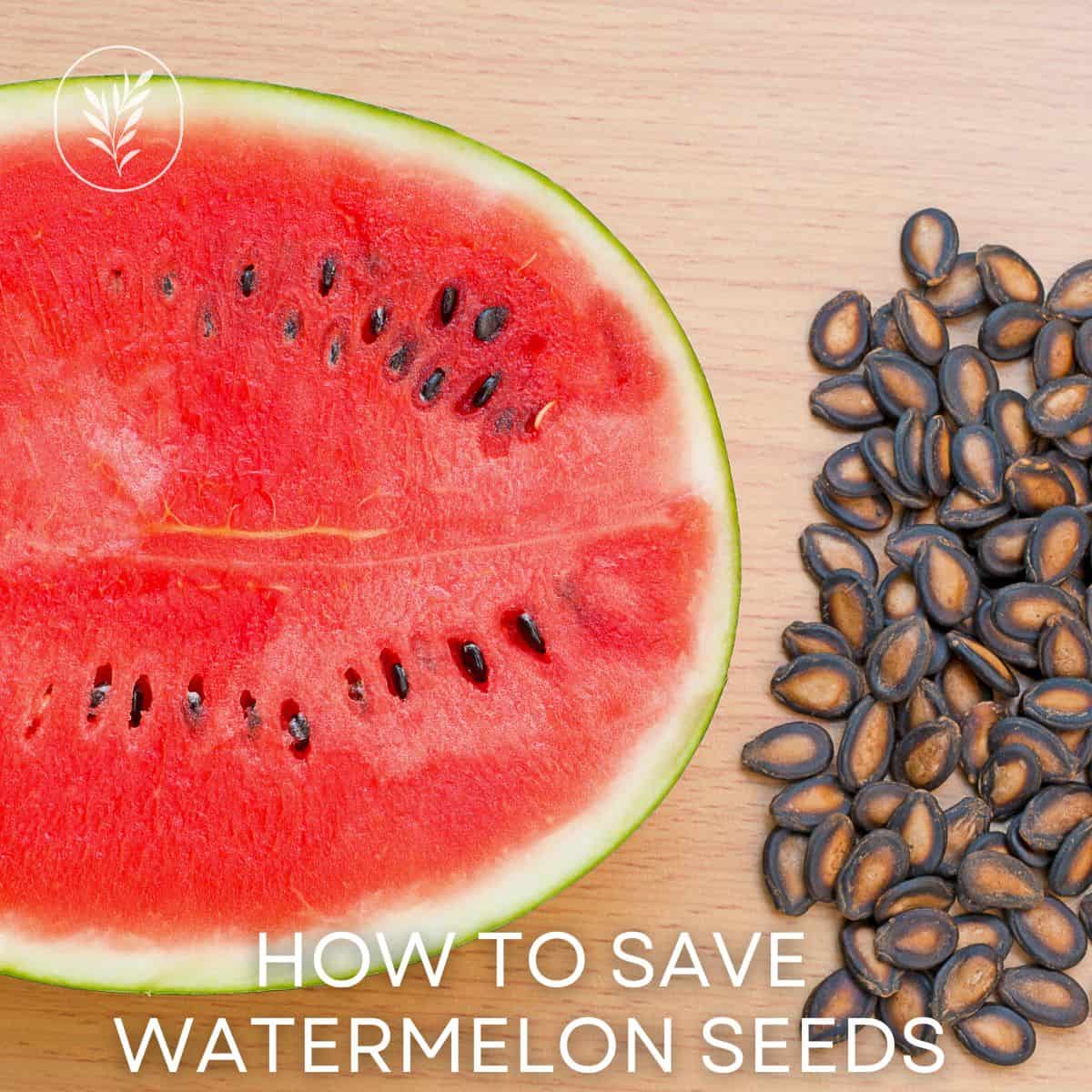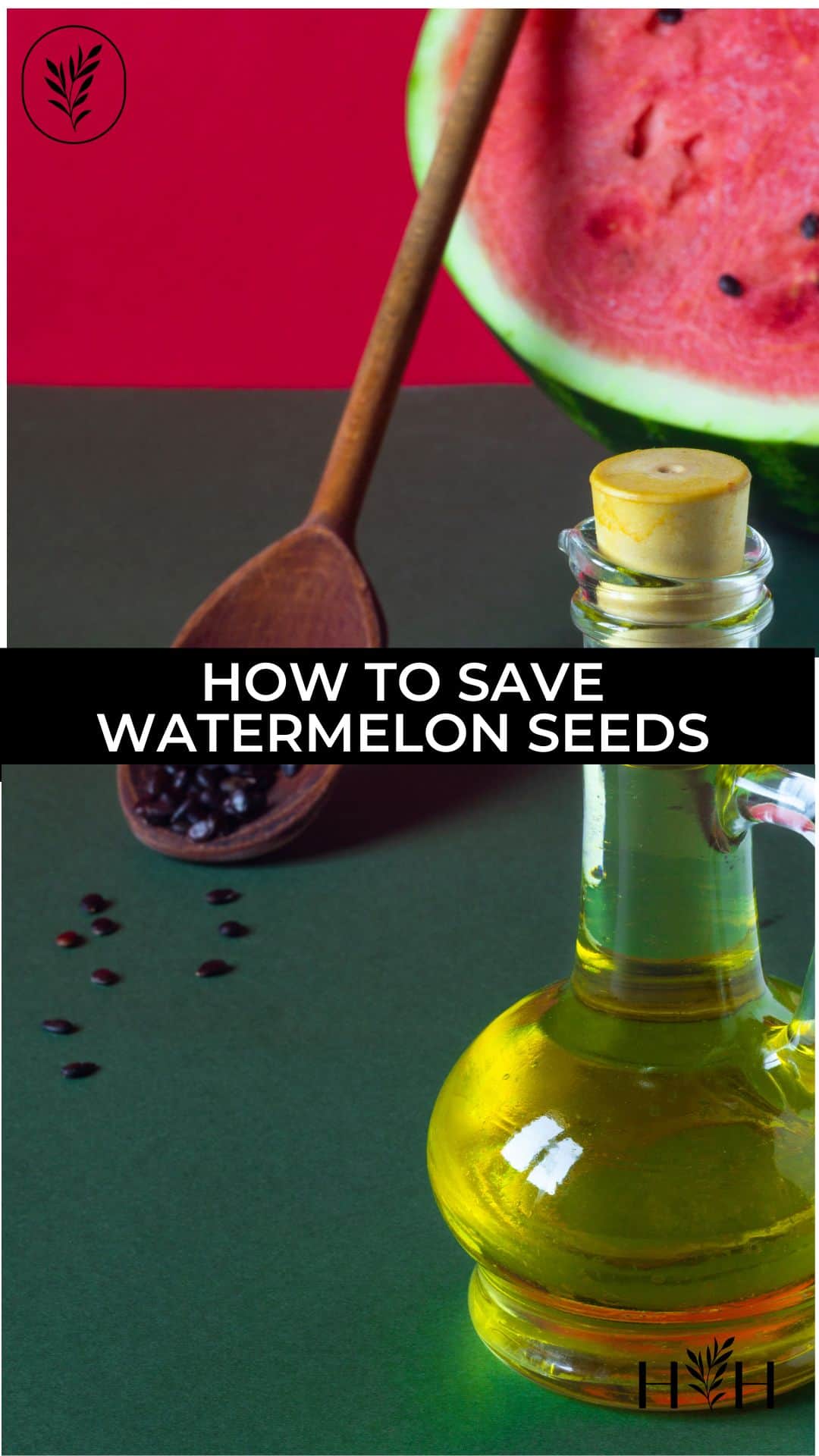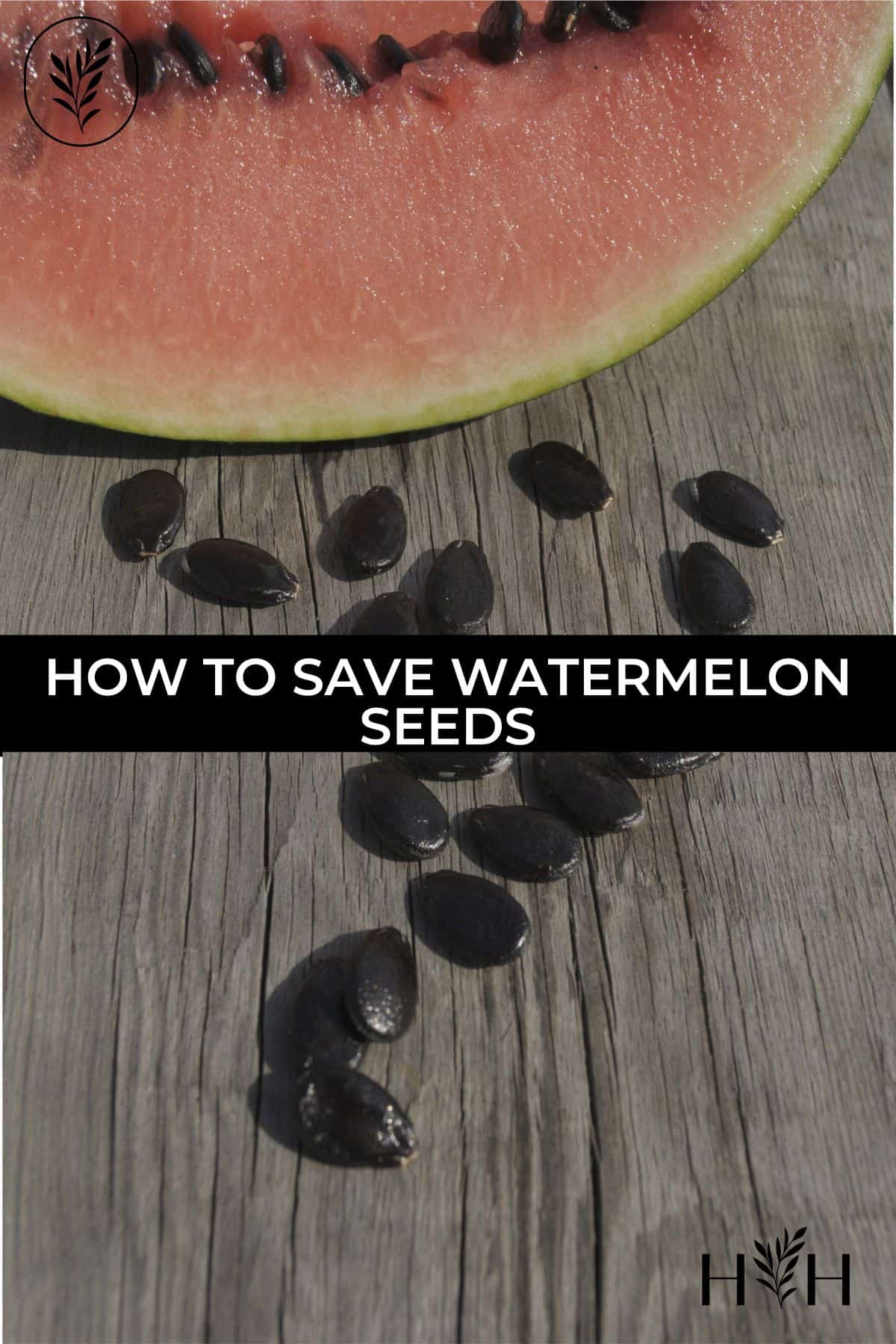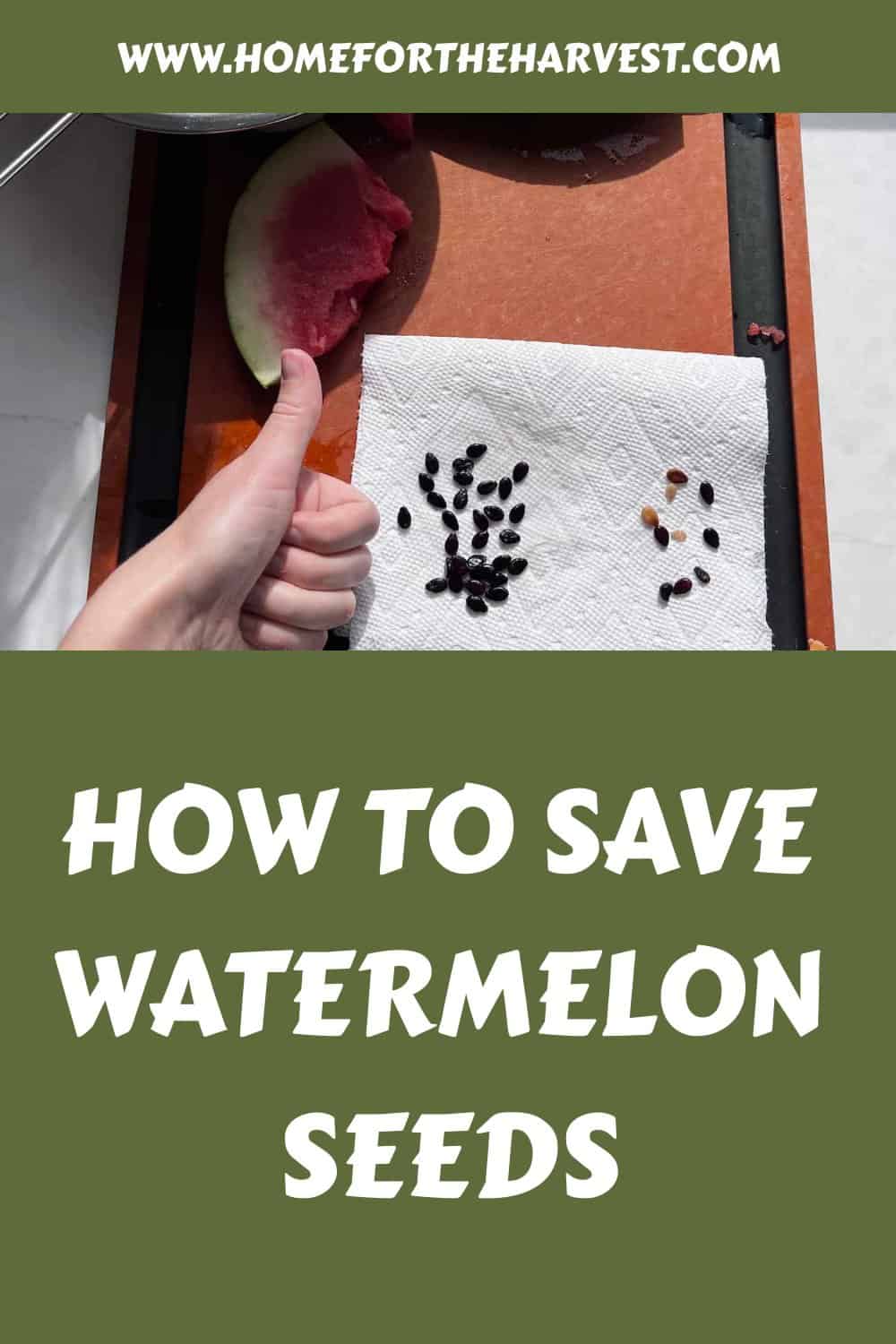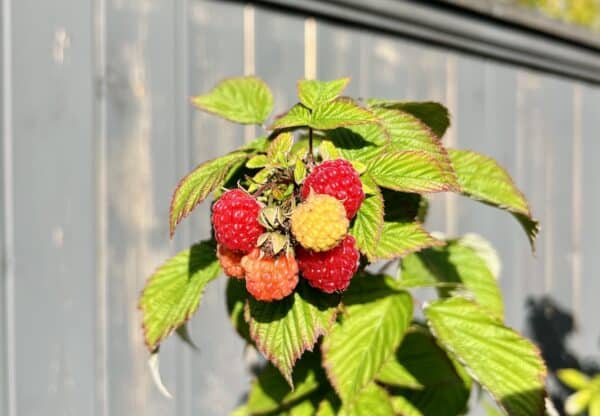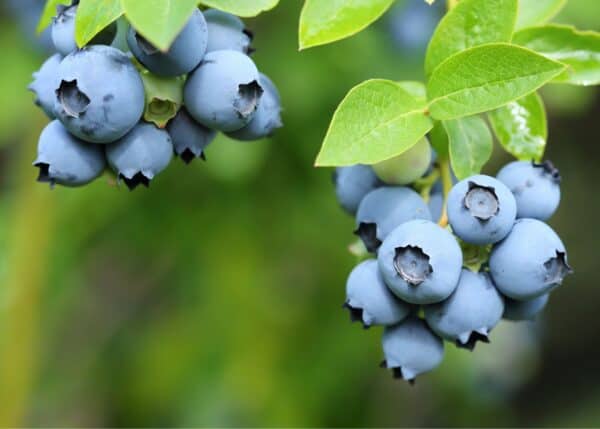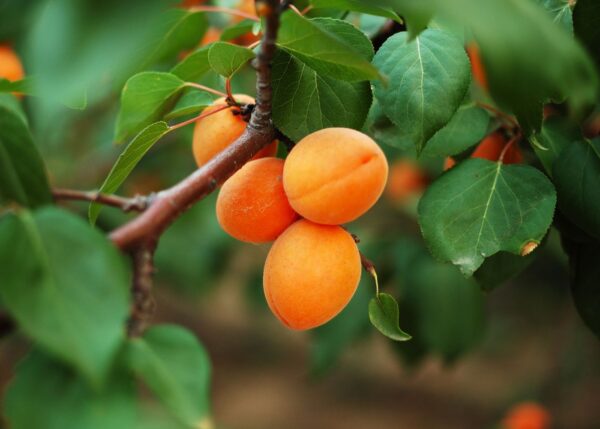Wondering how to save watermelon seeds? These warm-weather fruits are easy and fun to save seeds from!
To save watermelon seeds, start by growing an open-pollinated variety of watermelon. Choose 5-10 ripe watermelon fruits to save seeds from. Collect the seeds as you cut the watermelon and place them in a sieve. Wash the seeds gently under clean running water. Place the rinsed seeds on a paper towel or coffee filter to dry for a few days. Then package the seeds up, label them, and store them in a cool, dry, dark place for up to five years.
Read on to learn all about saving watermelon seeds!
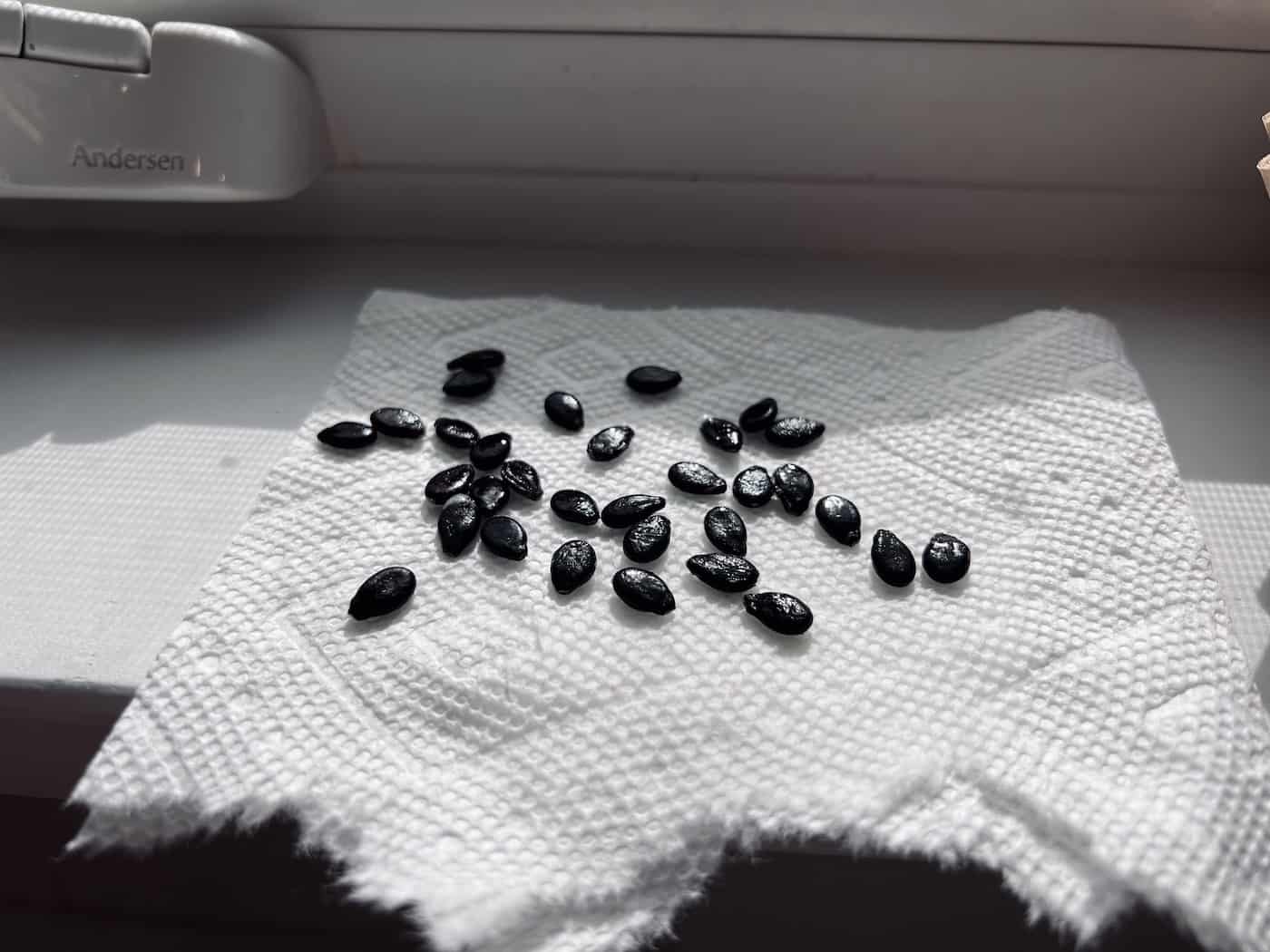
How to save watermelon seeds
Watermelons are one of the best garden crops for beginner seed saving. They’re easy to grow and the seeds are large, making them easy to handle.
To learn how to save watermelon seeds, start by growing an open-pollinated variety. Open-pollinated watermelons will have seeds that will grow “true to type” meaning they will be identical to the parent plant. If you want to save seeds from a hybrid watermelon, know that the offspring may not resemble the parent plant.
Watermelon flowers for seed saving are usually hand-pollinated to avoid cross-pollination between different varieties and with different species like melons, cucumbers, pumpkins, zucchinis, and other squash.
Either close the flowers with clothespins or use blossom bags with a bit of cotton to keep pollinators out. Also, use a ribbon to mark the stem so you know which fruits to save seeds from at harvest time!
Choose 5-10 ripe watermelons to save seeds from. Collect the seeds as you cut up the watermelon and place them in a sieve. Wash the seeds gently under clean running water. Place the rinsed seeds on a paper towel or coffee filter to dry for a few days.
Then package the seeds up, label them, and store in a cool, dry, dark place for up to five years.
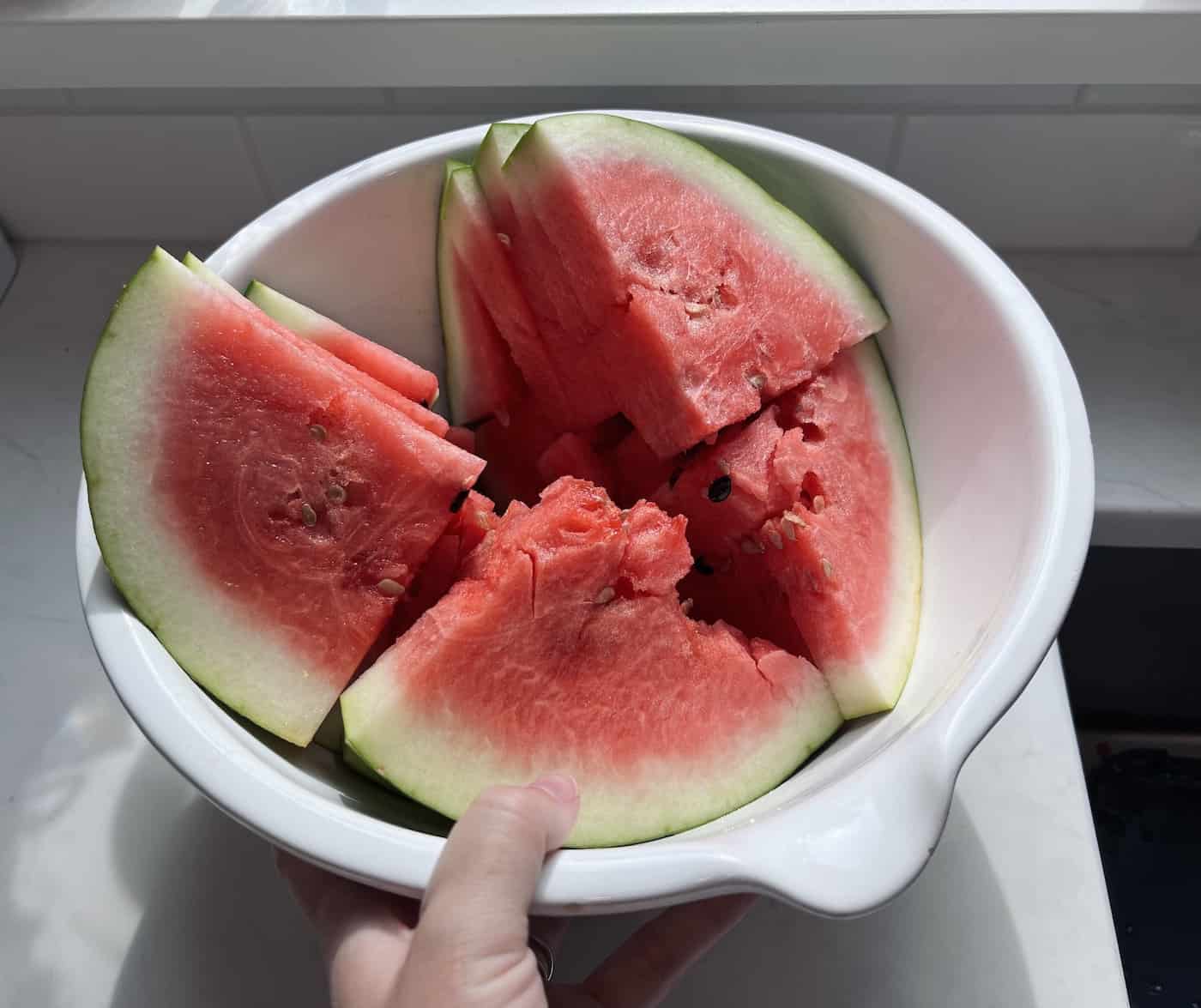
Steps for saving your own watermelon seeds
Here’s a step-by-step guide on how to save watermelon seeds:
- Choose 5-10 ripe watermelons to save seeds for genetic diversity.
- Cut up the watermelon to eat and collect the seeds as you go.
- Place the seeds in a sieve over a bowl to catch the drips.
- Wash the seeds gently under clean running water.
- Separate out any seeds that are small, pale, misshapen, or damaged.
- Place the rinsed seeds out to dry for a few days on a paper towel or coffee filter.
- Package the seeds up and label them with the variety name and the date.
- Store in a cool, dry, dark place for up to five years.
And that’s it! Saving watermelon seeds is easy and fun. With just a little bit of planning, you can grow your own watermelons from seed.
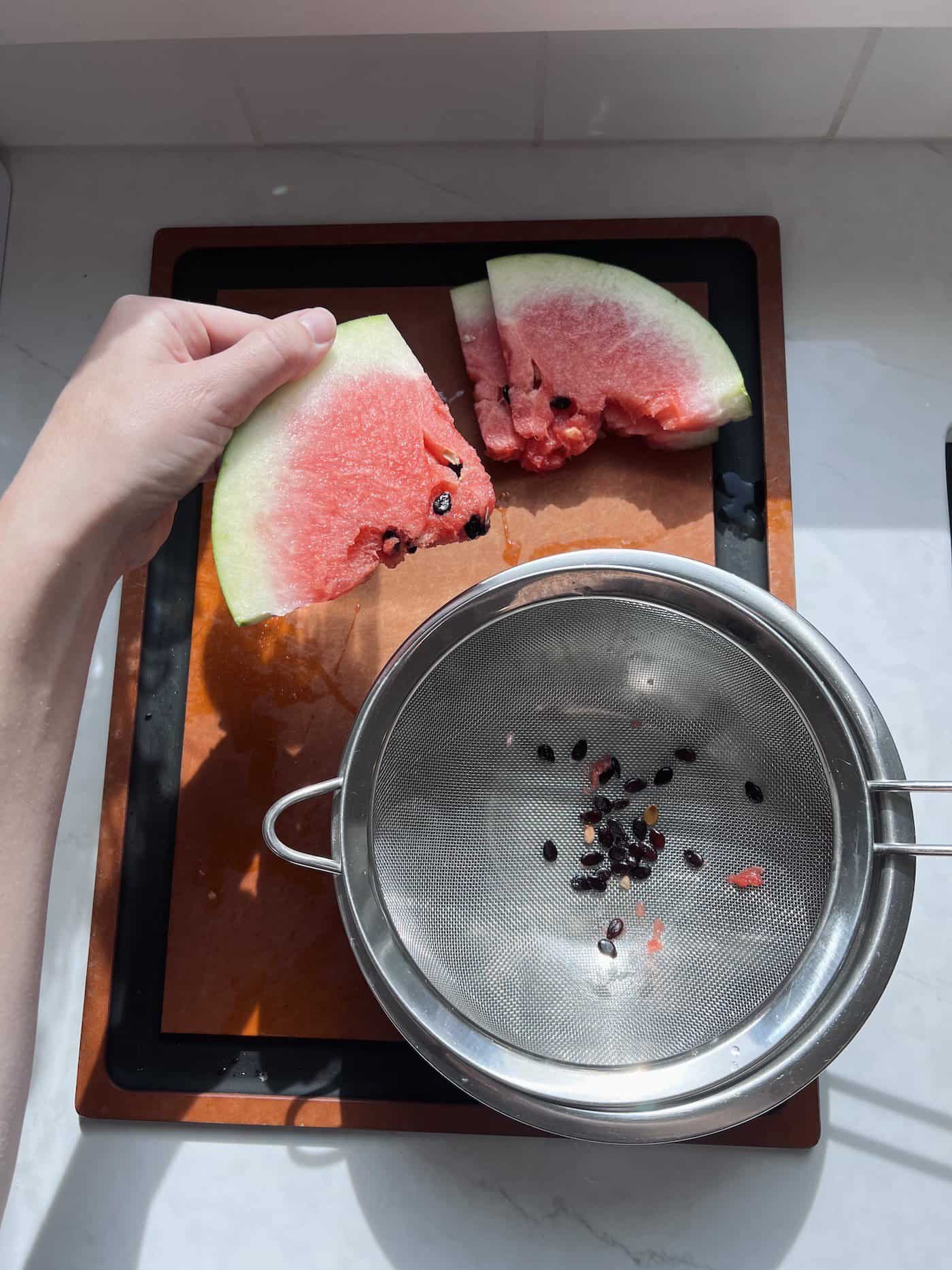
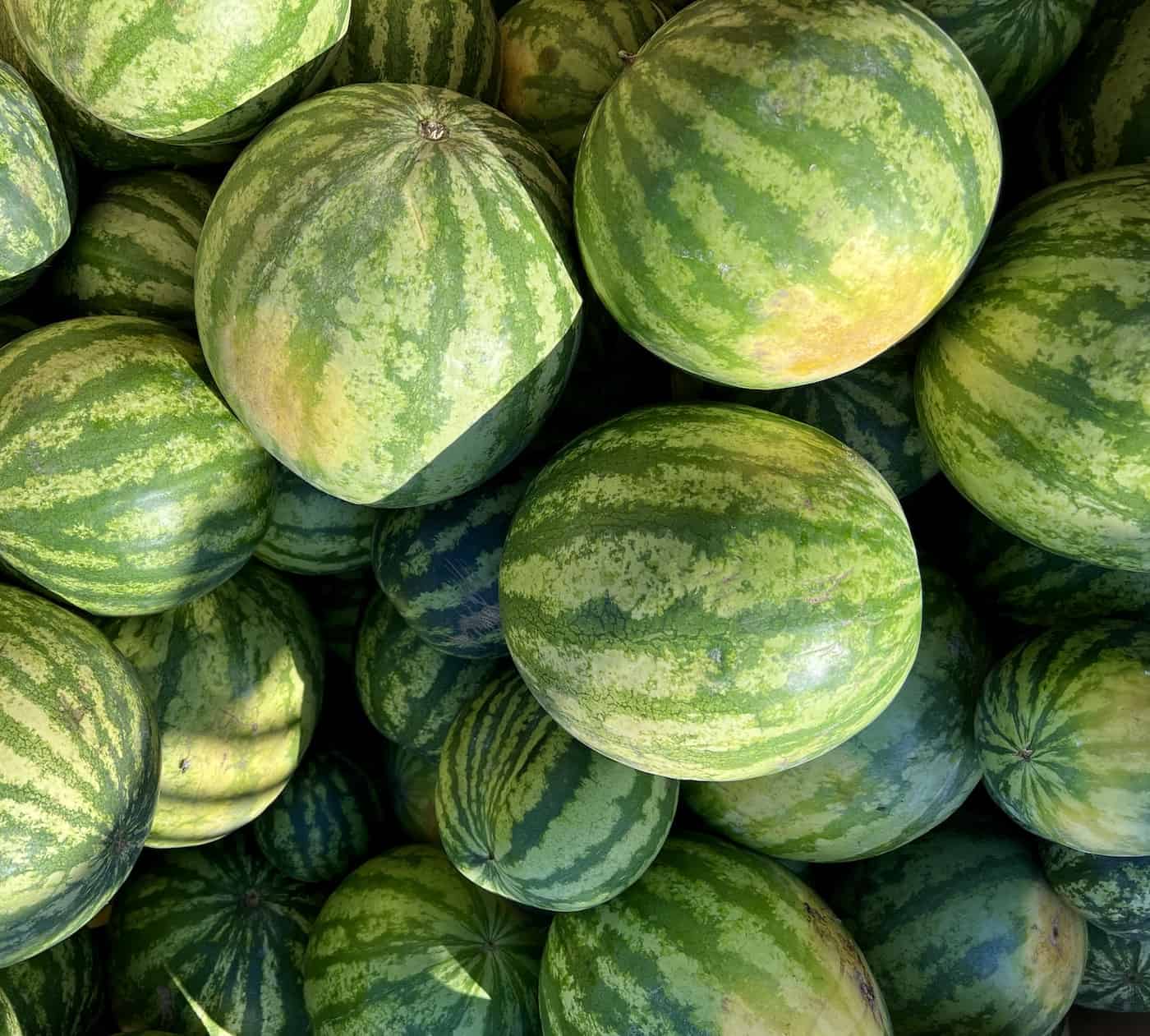
When to save watermelon seeds
To save seeds, wait until watermelons are perfectly ripe for eating or slightly overripe. Don’t save seeds from watermelons that are not yet ripe enough to eat or from watermelons that are decaying and rotten. Some varieties take only 70 days from transplant to ripen, while others can take as long as 110 days.
Watermelons tend to turn yellow on the bottom (the “ground spot”) when they are ripe. Another sign that the watermelon is ripe and ready to pick is that the nearest tendril has dried.
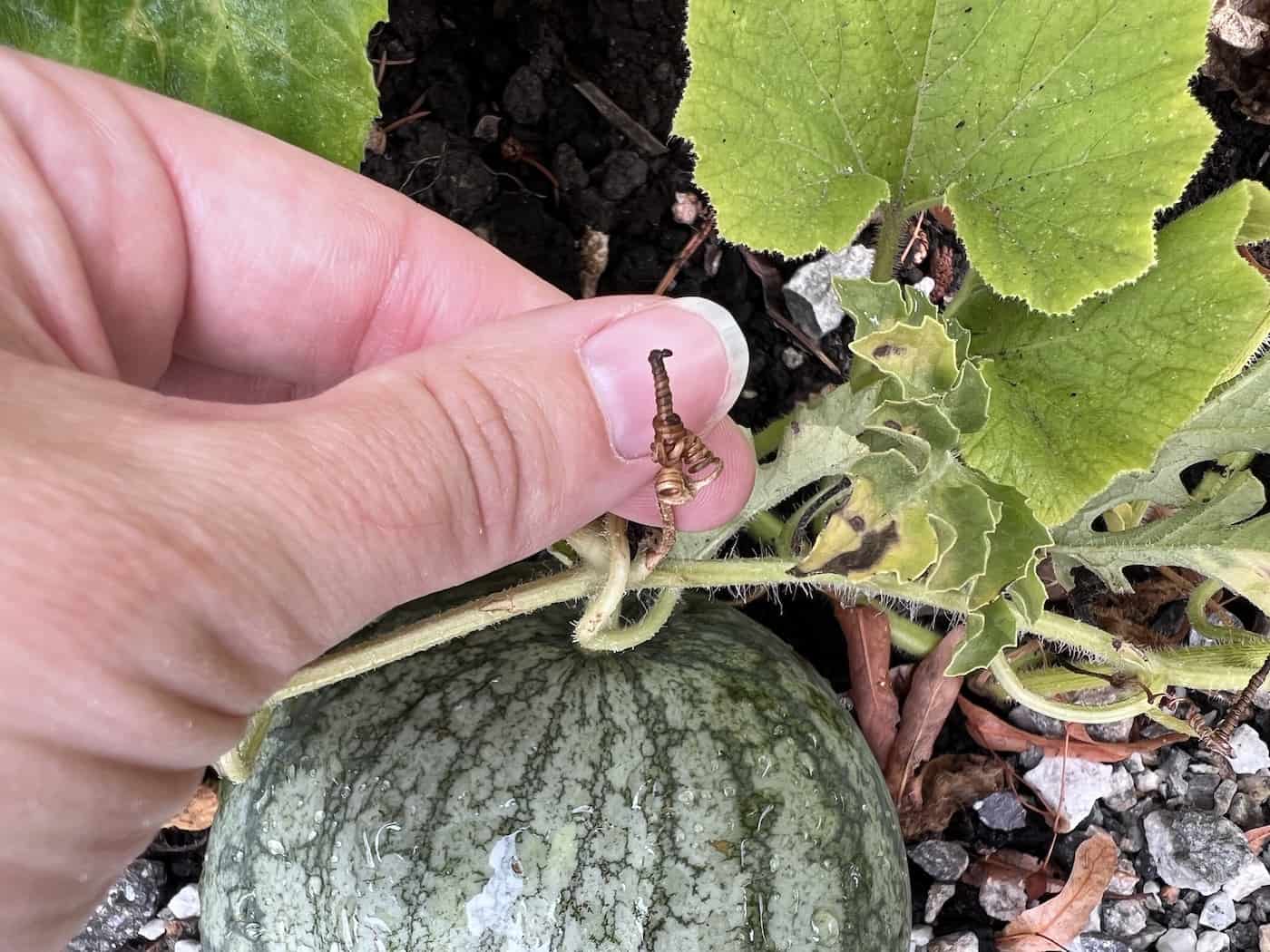
Choosing watermelons to save seeds from
Choose the tastiest watermelons to save seeds from. Avoid saving seeds from watermelons with pale flesh or with open cavities inside the fruit.
Only save seeds from watermelons that are an open-pollinated variety if you’d like them to grow “true-to-type”. And if a “seedless” watermelon does happen to produce a seed, don’t save it as it will likely not be viable.
Harvesting, cleaning, and drying watermelon seeds
To harvest watermelon seeds, start with 5-10 ripe watermelons. While you can certainly save viable seeds from a single watermelon, it’s good to keep a bit of genetic diversity for variety maintenance. For true genetic preservation, consider saving seeds from at least two dozen fruits grown on true-to-type plants.
Slice the watermelons up. Pick out the best seeds and place them in a bowl or sieve. Discard any that are damaged, pale, thin, or misshapen. Wash the seeds gently with running water to remove any clinging bits of fruit. Place the rinsed seeds on a paper towel or coffee filter to dry for a few days.
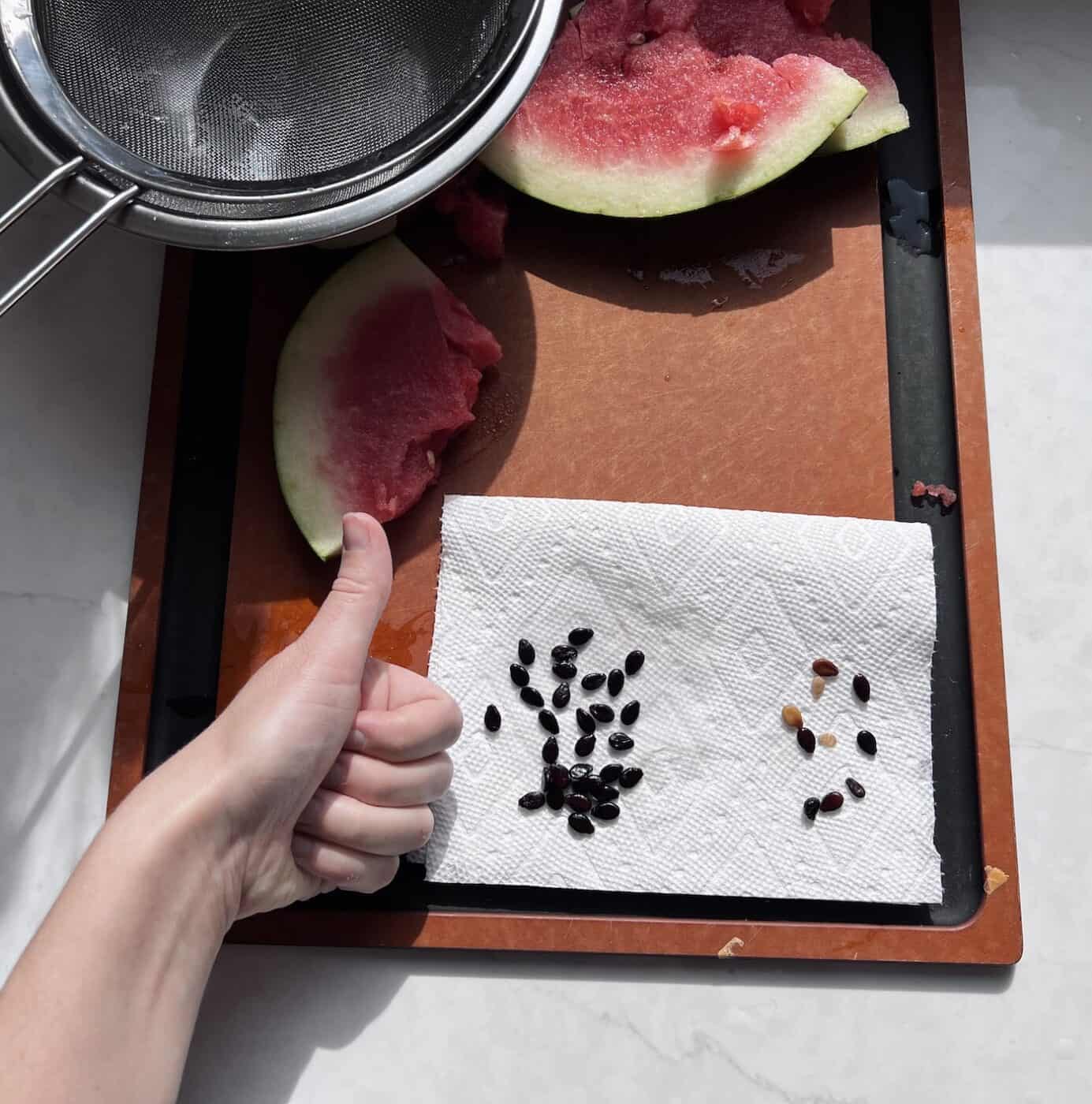
Once they’re dry, they’re ready to be stored! Choose the largest, plumpest seeds to save. Discard any damaged seeds, any pale seeds, or any misshapen seeds. Store them inside a glass jar in a dry, dark, cool spot (see the section below for details).
Watermelon seed development
Watermelon is in the Squash Family (Cucurbitaceae). Botanically speaking, Watermelons are a berry. They have seeds inside them, spread throughout their pulp.
Watermelon plants have both female and male flowers on the same plant. Plants usually start by growing only male flowers to start attracting pollinators, but then start to introduce some female flowers in the mix. The female flowers have a small oval-shaped ovary behind the flower that will become a watermelon if adequately pollinated.
“Watermelon plants are usually monoecious, but there are andromonoecious varieties.”
The Complete Guide to Saving Seeds, by Robert Gough and Sheryl Moore-Gough
Watermelon plants are self-compatible, so the male flowers on one plant can pollinate the female flowers on that plant. The plants can also cross-pollinate with other watermelon plants. Some seed gardeners like to remove weak plants and plants that are not true-to-type before they can flower and contribute pollen to other plants.
Watermelon flowers are insect pollinated. Bees do a great job of pollinating watermelon plants, so be sure to plant many companion plants in the neighborhood to attract them, so you’ll get lots of fruit sets.
To save watermelon seeds, you’ll need to start with an open-pollinated variety. Open-pollinated watermelons will produce seeds that grow true-to-type, meaning the new plants will be identical to the parent plant.
Hybrid watermelons, on the other hand, will not produce seeds that grow true-to-type. That’s because hybrid watermelons are created by crossing two different watermelon varieties. The resulting offspring will have a mix of characteristics from each parent plant, and its seeds will not grow true to type. Seeds from “seedless watermelons” may not even germinate (which is awfully disappointing if you’ve put years of effort into saving them).
Storing watermelon seeds
Watermelon seeds are easy to store at home.
Packaging seeds for storage
Before storing seeds, it’s important to package and label them. This will help you track what seeds are from what fruits and how old they are.
To package watermelon seeds for storage, use an airtight container for the longest storage life. Glass jars work well. You can also use plastic bags or paper envelopes. Be sure to label the container with the name of the variety and the date the seeds were harvested.
Ideal conditions for storing watermelon seeds
Watermelon seeds can be stored at room temperature in a dry and dark place. A cabinet or drawer works well. You can also store them in the refrigerator.
Planting watermelon seeds
Watermelon seeds are usually planted indoors, as they germinate best with soil temperatures around 30 degrees Celsius. Watermelon seeds usually germinate and sprout in 4-12 days.
Sow watermelon seeds in biodegradable pots. These seedlings do not like their roots to be disturbed and are easiest to transplant pot and all. Peat pots are a good choice. Wait until the soil is a minimum of 70 degrees F before planting the seedlings outdoors.


